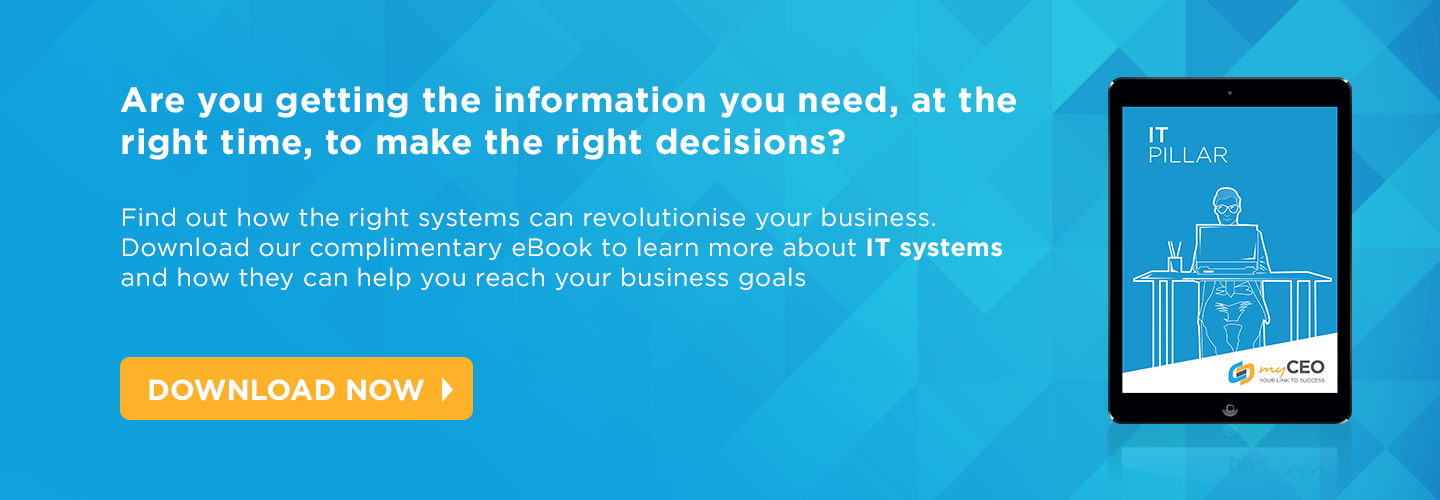
There are so many new advancements in technology, and the experts are already looking forward to what comes next. It is daunting, to say the least. To perceive the rapid development in technological trends as a digital rat race is not uncommon, but it is smarter for business to view this advancement as a source of opportunity.
After all, technology is always a purposeful application of knowledge, especially in industries that deal with goods and services. If large businesses can harness these applications to bring efficiency to their processes, strategic SMEs and startups also can use them to level out the playing field towards success. These are the 8 tech trends you need to be looking at as a business owner this 2015:
The Internet of Things
People, places, products—everything is bound to have a virtual presence in the Internet of Things. Digitising specific components of your business means using devices such as sensors and tags to manage your processes more efficiently. Business owners can take advantage of this wireless communication if they want to monitor things ranging from merchandise and delivery information, to facility meters in the office.
Cloud-computing
The cloud has been a growing trend since 2012, and for a good reason. Not only it is enabling businesses and clients to archive their data sensibly, it gives them online access to this information from any mobile device. A plus for owners and clients is that the data can also be processed within the cloud itself, eliminating the need for these applications to be anchored to a local computer.
Big Data Analytics
In a small business, it’s important to be able to glean actionable insights from the information you hold. Today’s kinds of analytics software make it easier to sift through large amounts of data (stored or real-time) in the way data warehouses are unable to. The good news for small businesses is that big-data solutions are becoming available at lower cost and scale. These can be tailored to your needs specifically and be introduced to employees without requiring extensive training with an analytics professional.
Mobile
Two words: access and applications (apps). In the same way you want to have easier access to data stored in the cloud, your targets would want to be able to access your content easily through mobile devices. A huge trend in website design is optimising for mobile, which means making considerations for readability, touch, and data consumption. Mobile apps are also another way your business can reach out to audiences or innovate in the workplace. There are many trade-offs between letting your employees use business apps at work and asking them not to use their smart phones entirely, and it is important to consider them well.
Cyber Security
With the amount of information being stored and accessed online, it’s also important to invest in the proper technology to protect it. Small businesses do get targeted for attacks because they hold information about both the business and its customers. Investing in the proper software for antivirus and encryption is a way for owners to address these concerns, but ultimately the amount of risk you have towards theft and privacy will depend on how responsible you and your employees handle information online.
CRM Suites
Customer Relationship Management (CRM) suites enable companies to track and measure all interactions across the customer lifecycle using one system. With the variety of marketing channels available to businesses on the Internet, having one system to integrate them makes it easier to provide your customers an aligned and engaging experience with your brand.
3D Printing
Whether you’re in the business of moving from ideas to prototypes or creating edible sculptures of your own, 3D printing can be an interesting technology to tap into. Affordable printers are now available in the mainstream, providing creative businesses the precision and speed they need to optimise the process of small-batch manufacturing.
Virtual Workforce
Interestingly, one of the tech trends small businesses seem very responsive to is the idea of a virtual workforce. Because managing business information and processes is now possible through the cloud, certain businesses opt for digitising their whole workflow to eliminate the need for a physical office. This set-up greatly reduces costs related to facility and equipment use and is designed to connect employees who need to work from different locations. As an owner, you don't have to jump on all of these technologies at once. However, they should impact your tech strategy in the next few years given the risks involved in being late to adopt. These trends can be major investments for your business, not necessarily in terms of scale but in terms of the competitive advantage they can add to your long-term initiatives.
For more in-depth strategies from our management consultants, download our IT Ebook Guide for SMEs.

